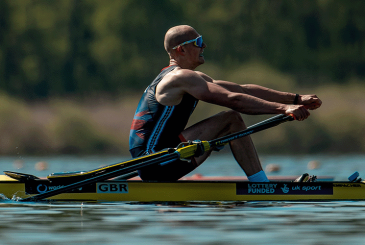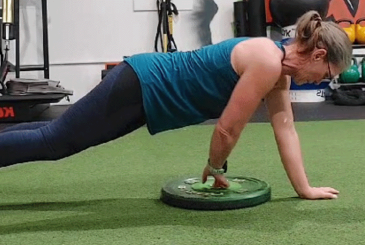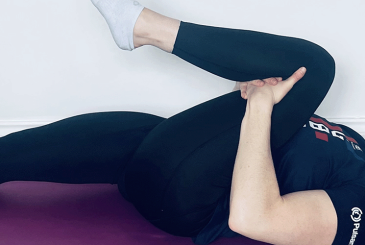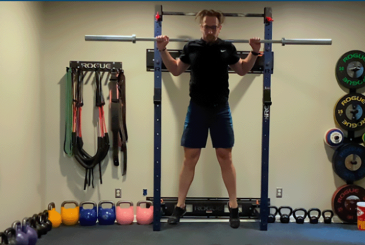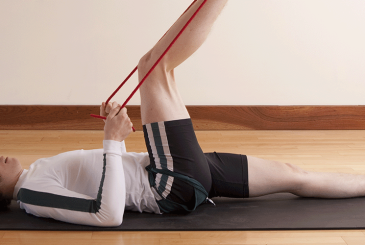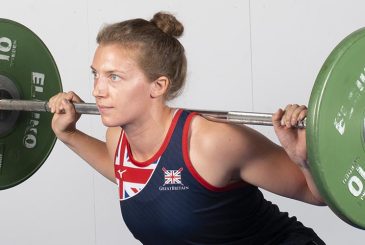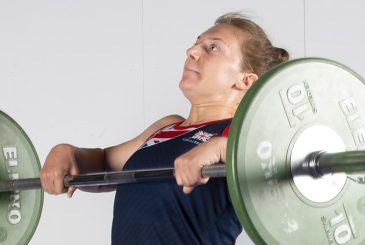What to do if you can’t get on the water? GB rower Vicky Thornley shares her go-to cross training activities
Aside from keeping your training going during bad weather, incorporating cross training into your winter schedule can also make you go faster on the water come the summer.
“I use cross training during the winter and early spring. Once we enter the racing season, I significantly reduce my cross training in order to maximise my in-boat focus. Here are four cross training activities that I enjoy doing.
1 – Indoor cycling
In the winter, if you find the water frozen or resembling the North Sea, cycling can be a break from the rowing machine. The indoor bike can be challenging mentally. Having done a whole cycling camp on a turbo-trainer, I know this only too well! Remember, time doesn’t stop and the session will come to an end eventually. Keep your mind on the benefits of the session and think about the summer races you might be winning – if you train well.
If you find yourself injured or in rehabilitation, indoor cycling is particularly useful. Always seek advice from a qualified professional when injured, but cycling can be a good alternative to rowing if you need to take the load off your back or ribs. If you do find yourself out of the boat for a period of time, you need to trust that the bike is a great way to keep working on your endurance capacity.
Indoor cycling can also bring variety to your training. Variety is the spice of life after all!
Keep your mind on the benefits of the session and think about the summer races you might be winning
2 – Road cycling
The GB women’s squad heads to the popular cycling island of Mallorca in the winter and it’s popular for a reason. The roads are well maintained, providing an assortment of terrain and, most importantly, it is home to big climbs, the most infamous being Sa Calobra. A piece of road that will be forever etched in my mind, having pushed me to my mental and physical limits numerous times.
Firstly, cycling is a great cardiovascular exercise that incorporates a lot of the same muscles that are essential to move a boat fast. Because your heart rate varies to a greater degree on the bike, compared to rowing, due to generally unavoidable changes in gradient, this offers up a new challenge and stress to the body.
A big benefit of road cycling is the length of time you can be on the bike. This can far exceed the time on the rowing machine or in the boat. The majority of our long steady-state rowing sessions last 90-100 minutes, so we are never pushing over the two hour mark. However, you can ride the bike for over six hours and this allows you to really push the endurance aspect of training.
Through the winter, running is something I often enjoy on a Sunday morning
3 – Running
In the past, there has been some fairly unsubstantiated proposals that running leads to injury, particularly the idea that it is ‘bad for your knees’, especially as rowers tend to weigh considerably more than the likes of Mo Farah. However, the evidence suggests quite the opposite if you follow some basic guidelines. I am a big fan.
Through the winter, running is something I often enjoy on a Sunday morning. We spend the majority of our training sitting down, so I enjoy the odd occasion when I can be on my feet. Running is also a great tool to clear our often overactive minds.
I use yoga, especially restorative yoga, to unwind on a day off or after a training camp
4 – Yoga
Why not incorporate yoga into your training routine? While it’s different from running or cycling, yoga will help you in other ways.
There are different types of yoga. Yang styles of yoga use rhythm and repetition, aiming to increase blood flow and build strength. Yin styles, such as restorative yoga, are about moving more slowly, and involve holding poses for longer and working on loosening muscles and joints. Both types teach you to breathe consciously and develop a greater understanding of your body.
I use yoga, especially restorative yoga, to unwind on a day off or after a training camp. I find it really relaxing, especially when it ends with a yogic sleep! I always sleep like a baby afterwards.”
Photo credit: Nick Middleton



